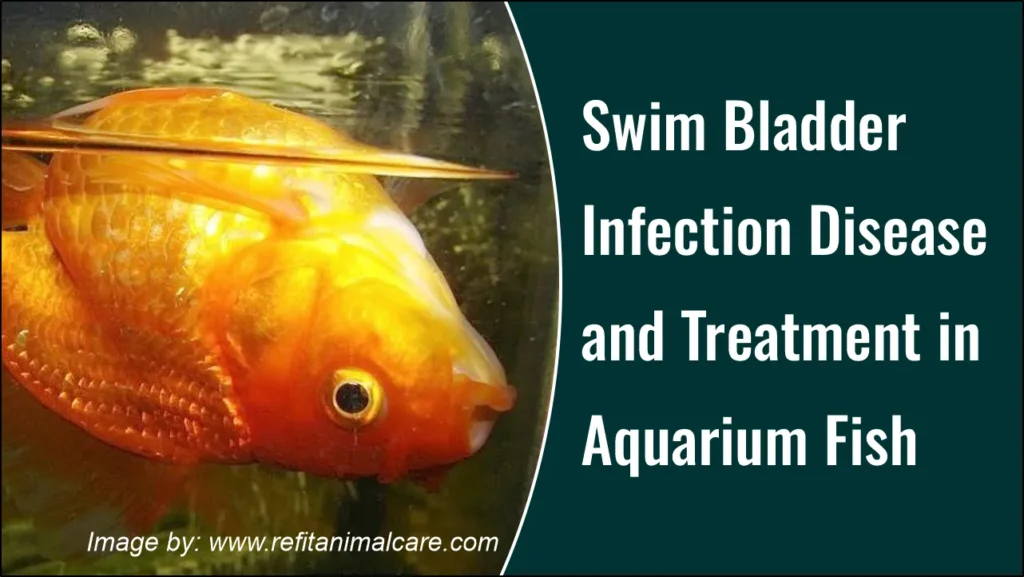
When an aquarium fish’s swim bladder gets infected or does not work properly, Swim bladder disease also known as Swim Bladder Disorder (SBD) or Swim Bladder Infection, is caused. Swim bladder infection treatment is necessary and requires immediate attention as the organ swim bladder contains oxygen and gases that help fish keep their balance and stay buoyant. This widespread infection affects fish’s movement, health, productivity, and overall well-being.
Signs and Symptoms of Swim Bladder Disease
Swim bladder infection in aquarium fish can be identified through the buoyancy ability of the fish. Generally, fish maintain a neutral buoyancy in the water resulting in their easy movement in the aquarium.
But when fish get affected with swim bladder infection, they lose this neutral buoyancy capability leading to either positively buoyant (includes spending too much time at the top of the water and not moving downwards) or negatively buoyant (includes spending too much time at the bottom of the aquarium tank and are not able to move upwards toward the surface).
Apart from the above, be watchful about several other signs that can indicate swim bladder disease in fish.
- Fish struggles to stay upright while swimming. It is tilted to one side or swims erratically.
- In advanced stages of infection, fish stay on the water surface with its belly facing upwards
- Feed consumption is decreased considerably due to the discomfort caused by the non-functioning swim bladder.
Causes of Swim Bladder Disease
- Excessive food intake due to overfeeding can lead to severe constipation. This in turn applies pressure on the swim bladder.
- Unhealthy water conditions and not regularly cleaning to aquarium tank can also lead to swim bladder issues.
- Build-up of ammonia or nitrite levels within the tank seems obvious especially when the tank is not cleaned properly or in a long time frame.
- These gases are known to cause stress on fish resulting in a severe impact on their overall well-being, health, and productivity.
- Physical damage or internal injuries can also cause injury to the swim bladder. Such injuries are known to occur either because of rough handling of fish or due to fighting between tank mates.
- Sometimes, bacterial infections are also the leading cause of getting infected with swim bladder infection. Bacterial infections are known to damage the swim bladder which in turn causes gas imbalance.
- Last but not least, one of the causes of getting swim bladder infection in fish is having birth defects. Swim bladder treatment in Goldfish and its varieties do have this important angle to look into. Thus, this can be a genetic reason which can help the onset of the disease.
Treatment of Swim Bladder Disease
Swim bladder disease treatment includes the following initial approach before getting in touch with the veterinarian:
- For about 2 – 3 days do not feed the fish.
- Doing so will allow the digestive system to rest and will reduce the pressure on the swim bladder, too.
- Enhance the water quality by regular water changes. It is suggested to change about 40-50% of aquarium water every few days. This will help keep the water quality better and minimize stress on the fish.
- Bloating and constipation can be reduced through regular Epsom salt baths. However, the dosage and the frequency should be as prescribed by the veterinarian.
Swim Bladder Treatment for Goldfish
Goldfish, one of the most common species are more susceptible to swim bladder disease. Swim bladder disease in Goldfish is more prominent because of their unique body shapes, as well as their eating habits, also contribute considerably. Follow these additional approaches for the swim bladder treatment for Goldfish:
- Pea acts as a laxative for Goldfish. Feed them to improve their digestion.
- Even a short-term shift to a high-fiber diet can help them a lot. Offer them high-fiber vegetable diet comprising of blanched spinach or zucchini.
Swim Bladder Disease in Betta Fish
Apart from Goldfish, Betta fish are also more commonly affected by swim bladder disease. Apart from all other treatment approaches mentioned above are similar, only Epsom Salt Baths should be avoided for bettas.
It is a painful experience for fish enthusiasts to see, encounter, and experience the pain of swim bladder disorders in fish. To avoid suffering it is always better to be attentive, observant, and careful towards your fish in the tank. Along with the above-mentioned steps to avoid swim bladder diseases and provide swim bladder treatment for goldfish and bettas, ensure to talk to your veterinarian to receive all required medical attention.










